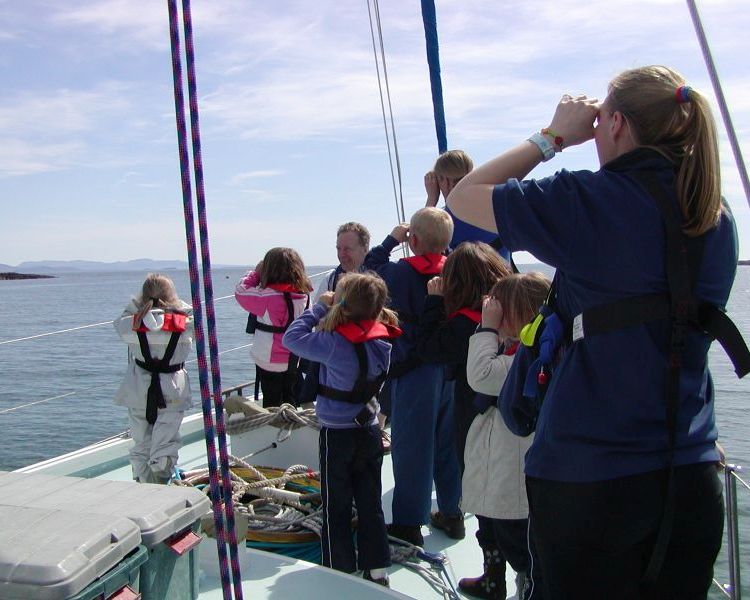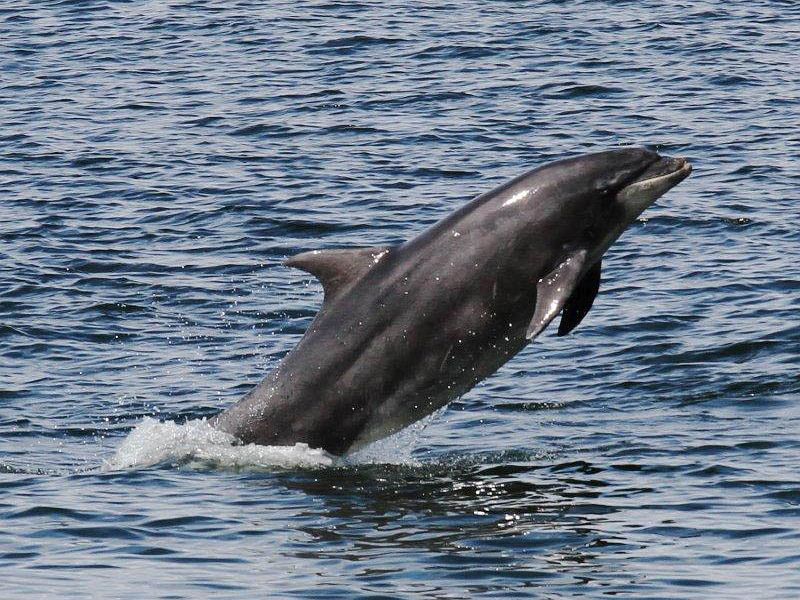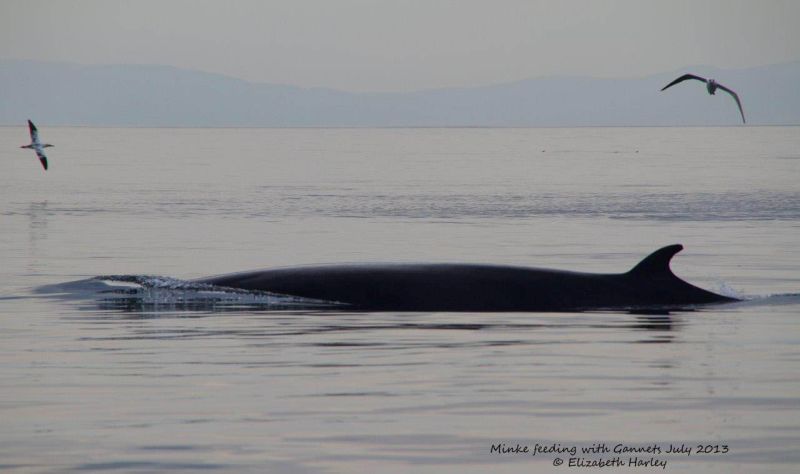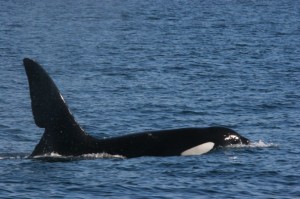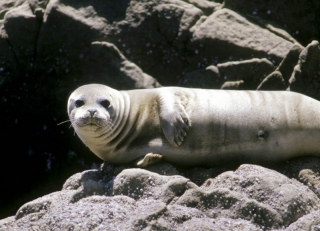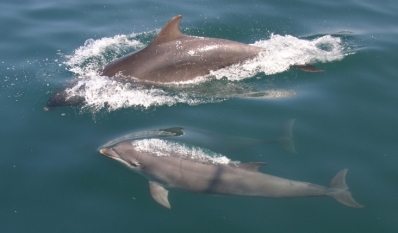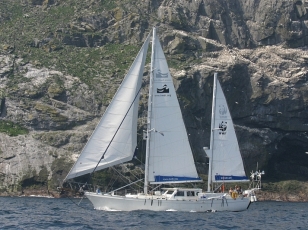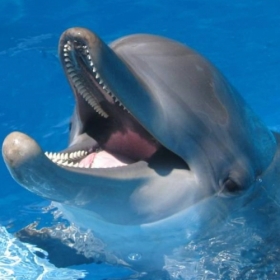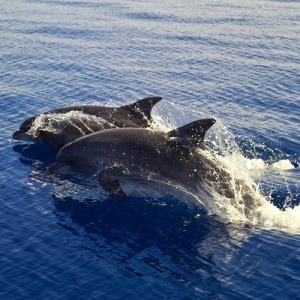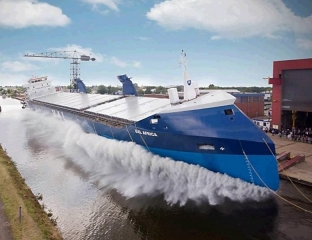Countryside lovers could be forgiven for thinking that environmental protection is a thing of the past in Scotland. Urban Sprawl is removing our green belt. Air, land and sea pollution in many cases exceeds EU maximum levels: roads in Aberdeen are among the country’s top ten most polluted roads.
Species protection and sensible, humane management of wildlife doesn’t seem to exist. The agencies charged with guarding our natural heritage for the present and for future generations seem to be stocked with those who place commercial interests above wildlife. In a four part series, Suzanne Kelly looks at this cull of the wild, focusing on Seal, Badger, Deer and Bird of Prey issues.
Late in 1998, during the ‘International Year of the Ocean’, Mi’kmaq Elder and Chief Charlie Labrador was asked by the ‘International Ocean Institute’ to address a major scientific conference held in Halifax, Nova Scotia. The theme of the conference was ‘the crisis of knowledge’. The following is an excerpt from Charlie’s speech to the gathering of marine scientists
“What you are telling me is you don’t know how to fish…You use the word ‘technology,’ but in my time there has been a decrease in everything…If something isn’t done soon, there will be no more time for any of us. There has to be something better than technology. It was sad a few years ago when our seals got the blame for taking the cod. It wasn’t their fault…those who harvest the earth’s resources must begin putting as much back into it as they remove…”
Debbie MacKenzie http://www.fisherycrisis.com/seals/sealsncod.htm
Seal culling – excuses despite humane solutions.
Perhaps Scotland doesn’t condone the clubbing of baby seals for fur, as is the case elsewhere, but the persecution of seals is a bloody, brutal reality.
Seals are being blamed for taking caged fish. Let’s dispense with the concept of ‘farmed’ fish which the industry favours, these are sentient, intelligent creatures which normally would move from the rivers to the seas and back. They are kept in crowded cages where they have been observed to be unhealthy and stressed.
The cages are protected to some small degree by netting; netting which by law is meant not to harm other wildlife such as the seals. This is not always the case, as a recent and nearly unique conviction shows.
Conviction Light: Graham McNally.
On the 28th of May of this year Graham McNally, 52, was convicted of using nets for the purpose of trapping and killing seals. This was the first such conviction in the UK under the 20 year old Conservation (Natural Habitats) Regulations 1994 and was heard at Lerwick Sheriff Court. (Further details from http://www.bbc.co.uk/news/uk-scotland-north-east-orkney-shetland-22695243 ).
A quick glance at related headlines might let a reader conclude that this was a great result, but the real story is different. The first issue to be considered is why there has been no other successful prosecution in 19 years for using nets for killing seals: does anyone really think this is the only instance?
Secondly, this man was fined… £800. Such a sum will be happily paid and in all likelihood amounts to nothing more than a mildly inconvenient business expense. The paucity of convictions for offenses against seals should be remedied, and the fines increased; it is a pity that the Government prefers to go after those on benefits with more than one bedroom to live in, with more zest than it shows in stopping seal persecution.
Thirdly, and possibly the most alarming development in this case involves the apparent concealment of the evidence. According to Shetland News :-
“… John Robins, of the Save Our Seals Fund, said that McNally originally pled not guilty to setting illegal nets between August 2009 and August 2011, based on evidence that seals had been entangled and drowned in such nets.
“Robins has written to the Crown Office and Procurator Fiscal Service (COPFS) asking if the charges were amended in return for a guilty plea or for any other reason, asking why the reference to the killing of seals was removed from the charges.
““Unless I have tangled up my court cases I was expecting hard evidence of dead seals to be presented by the prosecution,” Robins said, “I hope there was a very, very good reason why this evidence was dropped”
“The wildlife campaigner has also written to environment secretary Richard Lochhead using this case to repeat his call for proprietary anti-predator nets to be made compulsory at all Scottish salmon farms.”
http://www.shetnews.co.uk/news/6885-court-challenged-over-dead-seal-evidence ) :-
Aberdeen Voice readers and Tullos Hill deer campaigners will know John Robins for the work he did in helping to protest the deer cull, which with the massive tree planting on Tullos Hill was pushed through despite huge public opposition. Again, the motivation there was financial . The public was told that this was the least expensive way to plant trees, on a former rubbish tip with little soil and North Sea exposure, at Tullos. John told Aberdeen Voice:-
“The Shetland court case reinforces my demand for the Scottish Government to make humane predator exclusion nets compulsory at all marine fin fish farms. Properly installed and maintained these nets would eliminate any need to shoot seals and create much needed jobs in rural communities.”
“Scotland is turning into culling country. Geese, crows, deer, squirrels, wild goats are all being slaughtered in the name of conservation. This is the Year of Natural Scotland. An appropriate way to mark this would be to give every visitor a gun or a trap as they cross the border.”
A Man to Remember, who forgot why he clubbed baby seals: James Stewart.
The fines meted out to those who shoot, club and drown our seals is normally minimal – where it exists at all. Not all are involved in farmed fish; some are coastal residents and/or fishermen. Here however is a man to watch in future, who displayed particular contempt for and cruelty to seals:-
47 year-old fisherman James Stewart from Shetland was jailed for 80 days for clubbing 21 baby seals to death with a fence post. He admitted killing the animals as they lay on a beach on the island of East Linga but he did not explain why he did it. http://news.bbc.co.uk/1/hi/uk/7964109.stm
Scottish Salmon Producers Organisation – A Powerful Club.
The salmon industry represents that seals must be shot. In 2009 the BBC recorded spokesperson Scott Landsburgh of the Scottish Salmon Producers Organisation. He claimed that ‘only 498’ seals were shot in that year – a most precise figure indeed. He also claimed seals stole thousands of salmon from the farms. ‘Our primary interest is the welfare of the salmon’ – he said.
Presumably this welfare doesn’t extend to giving them more space or feeding them up until the time of a humane destruction. But what is the SSPO and how do they operate?
The SSPO represents several salmon producers, including Marine Harvest, Loch Duart and Wester Ross. Their website offers some impressive statistics which include:-
The growth in the UK salmon market:
- 1 million fresh salmon meals are eaten in the UK every day;
- 1 million smoked salmon meals are eaten in the UK every week;
- An additional 40 million servings of fresh salmon were consumed in UK households between 2006 and 2008.
Export performance of Scottish farmed salmon:
- The worldwide retail value of Scottish farmed salmon is over £1 billion;
- over 60 countries imported fresh Scottish salmon in 2011;
- the USA is the largest export market for Scottish farmed salmon, followed by France;
- Scottish farmed salmon topped the RSPCA’s Freedom Food chart in 2009, with an impressive 60% of production participating in the stringent animal welfare scheme.
http://www.scottishsalmon.co.uk/facts_figures/index.aspx
This adds up to a very rich and powerful lobby.
The SSPO website goes on to boast that information on sea lice has now been divulged. In terms of newsworthiness, this is rather like divulging who won last year’s X Factor. Do note that sea lice are not like the little flies we know – they are parasitic, blood sucking creatures that cause suffering.
Contempt of Law, Contempt of Wildlife
Local landowner Marc Ellington disagrees with seal shooting. He has given notice to Usan Salmon Fisheries to stay off his land for the purpose of shooting seals, but they don’t seem to be taking any notice.
While land can be freely accessed for recreational purposes or crossed (unless you are a Menie Estate resident to whom the law is turning a blind eye), you cannot go onto private land for the purpose of shooting, and seals cannot be shot at from boats – although we know that this is taking place. An article with Ellington’s comments can be found here:
http://www.banffshire-journal.co.uk/News/Warning-shot-is-fired-on-seal-row-16042013.htm
In it he says:-
“The company concerned has no business discharging firearms on land owned by Gardenstown and Crovie Estate without permission,” said Mr Ellington.
“They have not sought permission to use firearms on the estate to shoot seals, and permission would not be granted under any circumstances to do so.
“I am unhappy on a personal level, as someone with an interest in conservation, that seals are being shot at all, and I am especially concerned that there are reports of them being shot from estate land.”
The law is on Ellington’s side – but the carcasses of shot seals keep appearing in the area. In one particularly disturbing photo, those who shot a particular seal took a photo of the seal on the shore with a cigarette in its mouth and an alcoholic beverage as if it were drinking and smoking, These are the kinds of people who we have shooting seals.
It is clear that the advent of caged fish production is linked to the culling of our seals. What is life like for a salmon in a cage?
School of thought on Schools of Caged Fish.
Private Eye has for years carried stories on sea lice escaping from fish farms and infecting the wild, chemical contamination, and a little known food chain development:-
“In March, the satirical magazine Private Eye reported that the European Commission had quietly lifted a twelve-year-old ban on feeding ground-up animal remains to farmed animals; the ban was imposed in the wake of the mad cow disease scare when the practice of doing so was blamed for causing the disease.
“In the first instance the relaxation of the rule will only apply to fish farmers, who from June 1 will be allowed to feed leftovers from chicken and pigs to their captive salmon; the Commission argued that because in nature animals eat other animals, there was nothing to worry about – although they failed to explain how, ‘in nature’, salmon ate chicken and pigs.
“The UK Food Standards Agency (FSA) advice to government was that in principal the risk [of disease transfer to humans] would be negligible provided that it could be ensured that it was only chicken and pig going into fish feed; although in practice they noted that adequate controls were lacking. The SFA also said that no one could know for certain that pigs and chickens would not prove susceptible to “transmissible spongiform encephalopathy.” So that’s all right then, isn’t it?”
http://www.flyfishing-and-flytying.co.uk/blog/view/anyone_for_mad_salmon_disease/
Life is not a natural one for caged salmon; they are denied space; they are prone to parasites and disease, and the methods of slaughter used are condemned by organisations including Compassion in World Farming, which issued a report – http://www.ciwf.org.uk/includes/documents/cm_docs/2008/i/in_too_deep_summary_2001.pdf
This reads in part:-
“About 35 million each of salmon and trout are slaughtered annually in the UK.
“Farmed fish are normally starved for 7-10 days before slaughter. Inhumane slaughter methods for trout include suffocation in air or on ice. Carbon dioxide stunning, another inhumane method causing immobility well before unconsciousness, is used for both salmon and trout….
“Trout are often stocked so densely that 13-27 trout measuring 30 cm (1 ft) long are allocated the equivalent of a bathtub of water.
“ High incidences of severe and blinding cataracts have been found in farmed salmon. Infestation with parasitic sea lice is a serious problem for farmed salmon. Lice feed on their host. Damage can be so severe that the skull of the living fish can be exposed.
“Biotechnology is used widely in the UK trout industry to produce chromosome-manipulated “triploid” fish.”
At the time of writing, USAN has not responded to questions put to it. Comments on fish welfare would be welcome from the industry or its lobbyists. Perhaps we should be worried about our own welfare as well.
To your health?
Is all this wildlife damage and persecution doing us any good? Scientific American is not alone in warning of high levels of mercury and PCBs, a chemical linked to disease in humans. A recent article can be found here;-
http://www.scientificamerican.com/article.cfm?id=farm-raised-fish-not-free-mercury-pcb-dioxin
The caged fish industry does have a fair amount of problems to solve, but they are efficient at lobbying.
Environmental Protection – Supine SEPA.
The Scottish Environmental Protection Agency is not exactly getting glowing reports for its performance in many areas. It is ‘unable’ to determine which company or companies are polluting East Tullos Burn in the backyard of its own Aberdeen HQ. It does not seem to respond to questions put to it on its online contact form (no email addresses are supplied). And in the case of managing fish farms, as per the Guardian, it is falling down on the job:-
“Don Staniford, the anti-fish farming campaigner who has investigated SEPA’s monitoring data, tabling a series of detailed Freedom of Information requests, was blunter. He said salmon farming was a “malignant cancer”.
“SEPA’s statutory duty is to stop companies such as Marine Harvest using Scottish waters as a toxic toilet and dumping ground for chemical contaminants,” he said. “Yet SEPA has shamefully opened the floodgates to the use of a cocktail of chemicals. Shame on Scottish salmon farming and shame on SEPA.”
http://www.guardian.co.uk/environment/2013/may/10/marine-harvest-salmon-farm-scottish-loch
Conclusions.
Fish farms bring money and jobs to rural areas. They also, according to my research, bring disease to the captive animals, cruelty, pollution, persecution of seals, and some would argue human health problems where high concentrations of PCBs are involved. Is Scotland that short of jobs that profits must be maximised to the extent that animal welfare, compassion, ethics and respect for the environment are sacrificed further?
It is possible to improve cage protection to keep seals away without shooting or cruelly drowning them in nets. The organisations that could help – our police wildlife officers and the SNH – must do more. Culling our wildlife is not an acceptable means of justifying big profit margins.
Perhaps it is time to create a more powerful pro-animal, pro-environment lobby to counteract the efforts of the lobbyists who want to destroy our wildlife.
Suggested Actions
- Stop buying any farmed trout or salmon.
- Tell your preferred supermarket chains you will not be buying farmed fish.
- Lobby your representatives (find them at http://www.writetothem.com/ ) expressing concerns for the seals, the farmed fish – and your own health.
- Write to Marine Scotland, which licenses people to shoot seals, and state your opposition to the shooting of seals.
- If you are in the vicinity of any fish farms, report any sightings of seal hunting. Record anything suspicious and share with the police, and with Aberdeen Voice.
- Support organisations such as the Scottish SPCA, Compassion in World Farming, Seal Protection Action Group, One Kind and Animal Concern Advice Line. You will find their details on the internet.
We and our legislators should be demanding that the fish farm, which is in reality the caged fish, industry cleans up their issues. These include:-
- Overcrowding.
- Cruelty. Fish are often starved for days before they are killed.
- Parasitic infections such as sea lice, pollution (occasionally escaping from the cages);
- and of course shooting and drowning of seals.
Further Reading
Our Government has decided that rather than demanding better cages to keep the seals away and better life quality for the caged fish, that licensing people to shoot seals is the answer. It is not the only answer, but it is the one that those who like to hunt, and those who want to keep fish farm costs minimal might well favour.
The lobbying efforts of the powerful industry groups have made our officials focus instead on the perceived, invented need to destroy our seals. Experts have shown that better, more robust cages for the salmon, which certainly do not have an enviable existence, would prevent seals from taking fish from the farms.
But licensed and unlicensed killing is taking place to the detriment of the seals and the seas. The motivation seems to be, unsurprisingly, financial.
- Comments enabled – see comments box below. Note, all comments will be moderated.
 Following another mass escape of farmed salmon into the wild the Scottish Government has been asked to ban marine fin fish farms and move all production to on-shore enclosed pond and caged systems.
Following another mass escape of farmed salmon into the wild the Scottish Government has been asked to ban marine fin fish farms and move all production to on-shore enclosed pond and caged systems.